The sport of canyoneering offers a chance to explore some of the most amazing landscapes and infrequently traveled terrain. Utah is known to have some of the world’s best and most unique slot canyons, but Southern California has plenty to offer, too, and most are a short drive from Los Angeles. Here are some of my favorite canyons in the SoCal region.
A comprehensive guide of the canyon rating system can be found here. In addition to having the necessary technical skills and knowledge, it’s important to be familiar with the rating system so you don’t go into a canyon unprepared. The American Canyoneering Association (ACA) created a rating system for canyons that has become the standard in North America. A canyon rating looks like this: 3B III. The first number is the general difficulty rating. In this case, “3” means intermediate canyoneering, and you need technical gear to descend the canyon. A letter follows the number. “B” means water with no current or light current and still pools. And the Roman numeral at the end indicates the length of time it takes to get through the canyon. “III” means it “normally requires most of a day.”
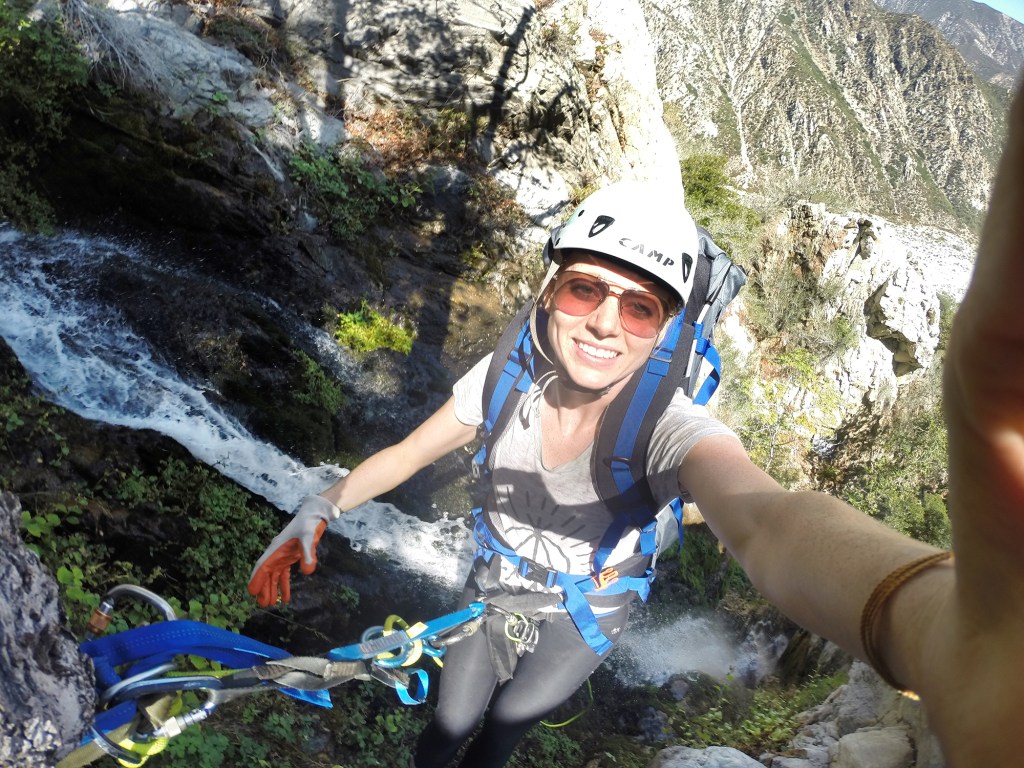
Kat Carney hangs out on the second pitch of the first rappel in Bonita Falls. (Photo Credit: Kat Carney)
Eaton Canyon (3B/C IV) – San Gabriel Mountains
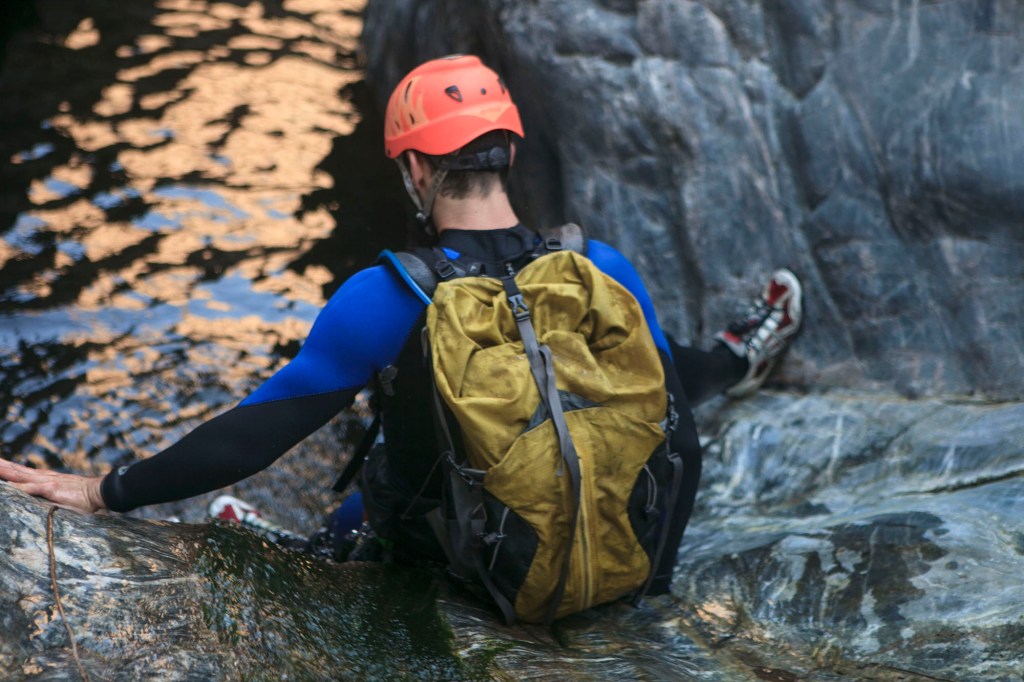
Photo Credit: Kat Carney
Eaton is my favorite Southern California canyon to date. With waterfalls, jumps and waterslides, the scenery is picturesque. It is easily a 12-hour canyon with a fairly long approach and around nine rappels. The canyon walls are high, beautifully carved, and the closest thing I’ve seen to a slot canyon in SoCal. We did it in the winter and a wetsuit is a must.
Middle Fork Lytle Creek (3B III) – San Gabriel Mountains
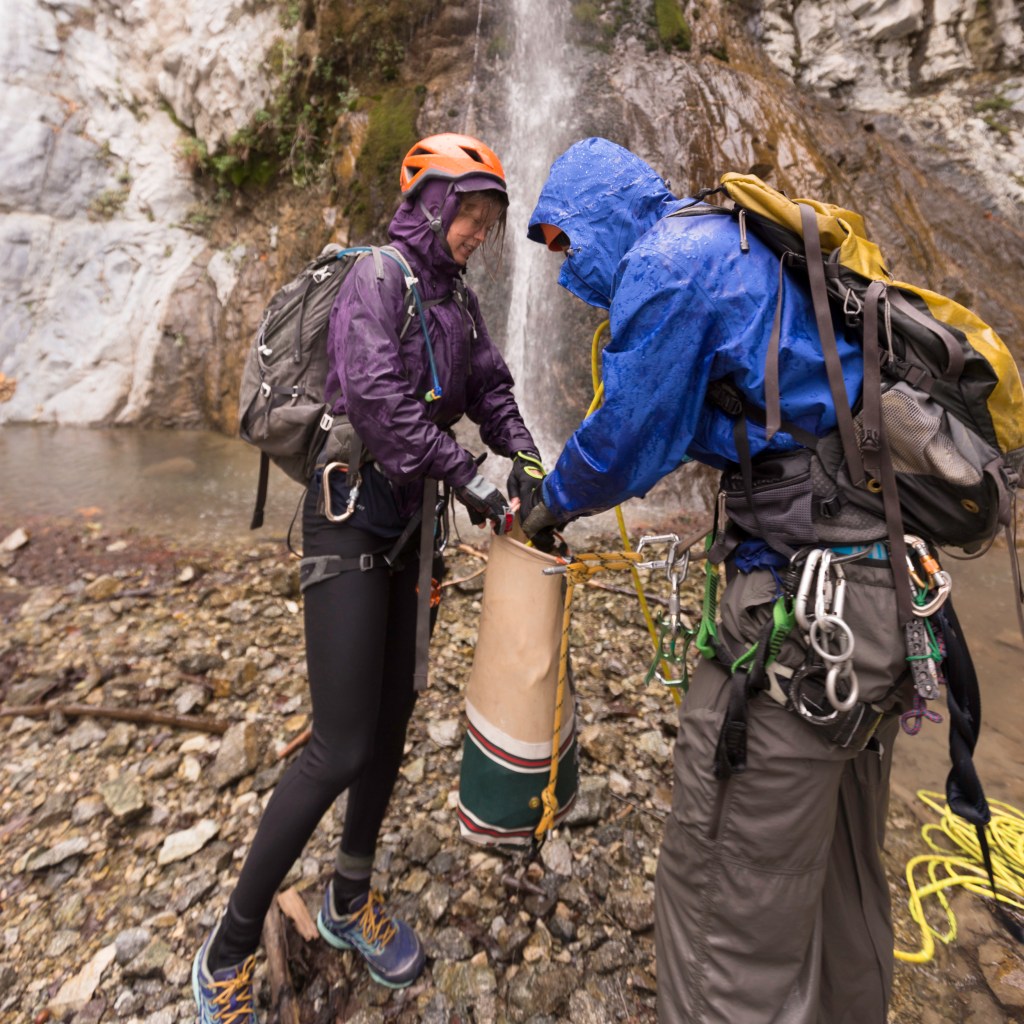
Photo Credit: Kat Carney
The approach to this canyon includes a walk through giant sequoias, which was surprising to me based on its location in the beautiful San Gabriel Mountains, just north of LA. Waterfalls flow over drops into gorgeous granite bowls and you are able to see some of the most spectacular views in the area. Most city dwellers have never laid eyes on these pristine falls, but with some ropes and a capable team, it is one of the best adventures in the area. We did it in the fall and a wetsuit was necessary.
Bonita Falls (3B III) – San Gabriel Mountains
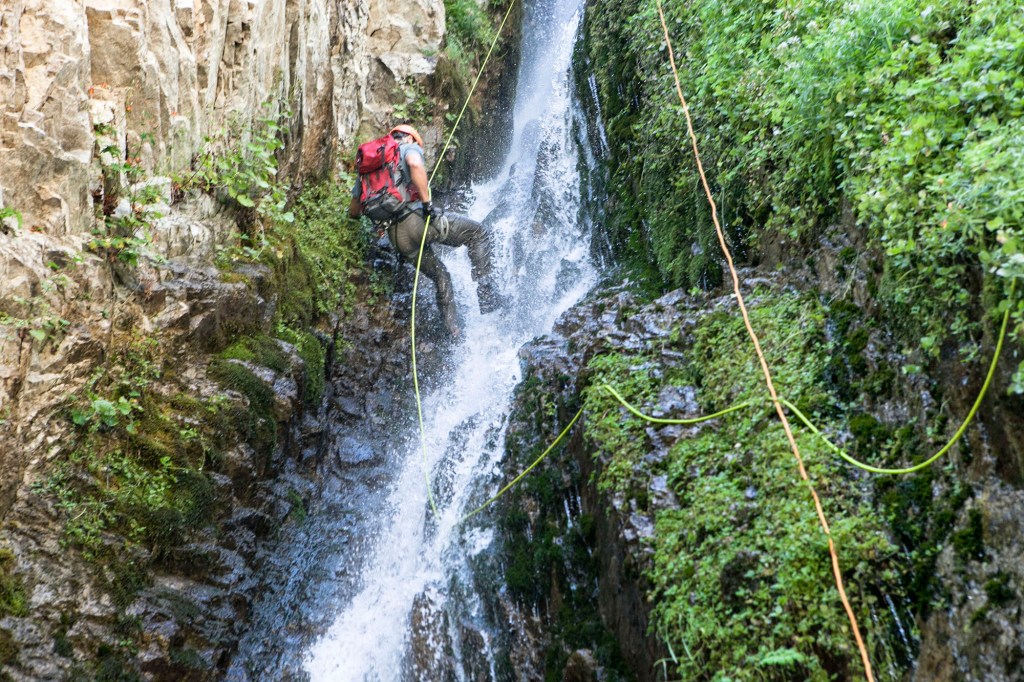
Photo Credit: Kat Carney
This short canyon has some of the most beautiful rappels in the area. The approach is steep and off trail, but well worth the descent. I’ve done this canyon four times, and I will do it again because at times, it feels like Hawaii instead of Southern California. The canyon is basically two tall waterfalls: One is 190 feet and is typically done in two pitches, and the second is 160 feet and is the endpoint of a popular hike in the area. Be careful not to dislodge rocks from above on the last rappel, as there are likely swimmers in the pool below. I have never used a wetsuit for this canyon, but it can get cold. A rain jacket is recommended.
Monkeyface Creek (3B III) – San Bernardino Mountains
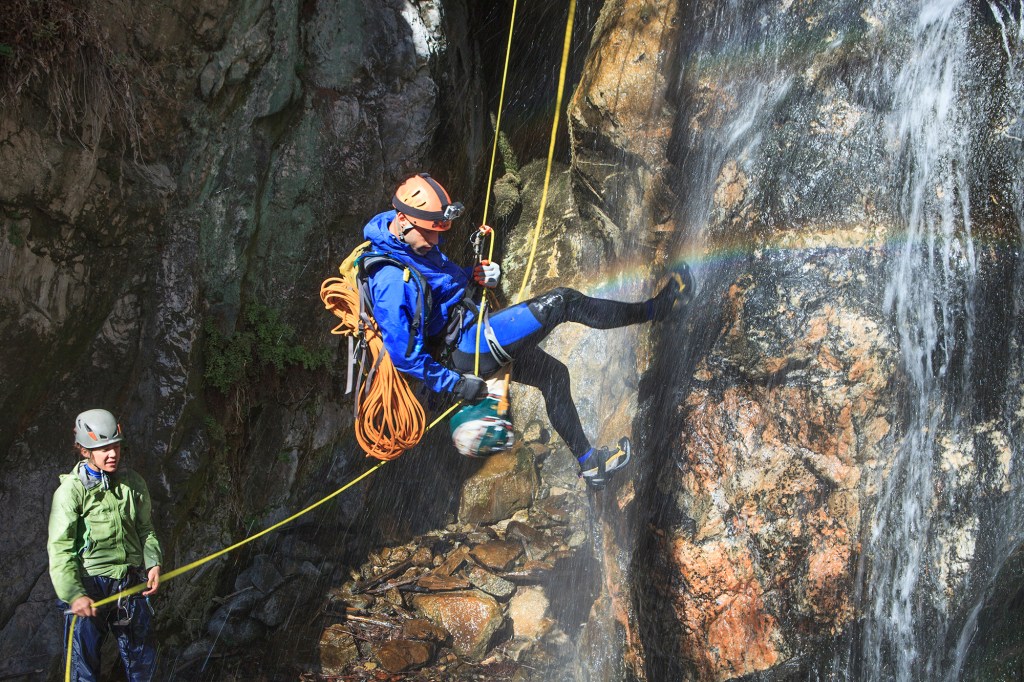
Photo Credit: Kat Carney
This spring-fed canyon flows year-round, making it a playground in any season. There are several free-hanging rappels in waterfalls, and various awkward starts from natural anchors, so previous experience is necessary. From start to finish, this canyon is full of lovely waterfalls and granite gorges. We used wetsuits and raingear to try to stay dry for as long as possible because we descended in early winter.
San Antonio Creek (3B III) – San Gabriel Mountains
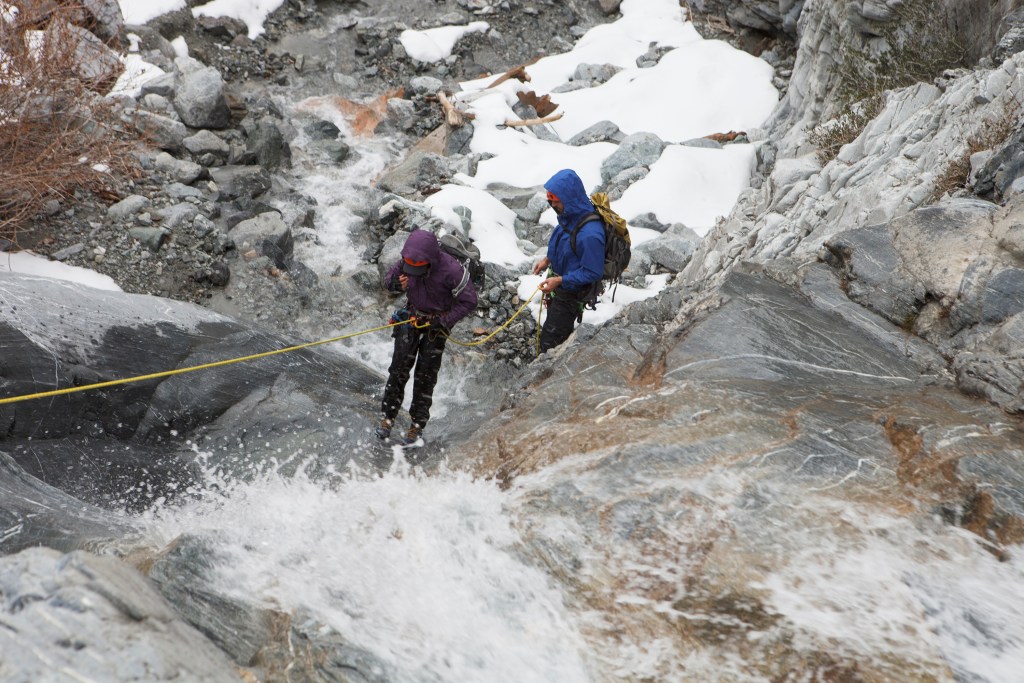
Photo Credit: Kat Carney
There is a short version of this canyon, which is the one I recommend. We did it in the winter with snow on the ground and then climbed Mount Baldy the next day, which made for an awesome weekend. This canyon is a short and sweet intro to the beauty of the San Gabriel Mountains. We used a wetsuit and raingear for this canyon because of the cold temperatures.
Skills Needed
You need more than gear to descend a canyon. Required skills include rappelling, anchor setting and knowledge of the canyon rating system. Learn from someone who knows what they are doing. I went to a meet-up group with a certified instructor leading a course before I started descending canyons. We learned about using our rappel devices, how to assist fellow participants with a fireman’s belay, and information about the knots and gear needed to set anchors. See if there is an REI class near you here. There are many ways to rappel and different variations depending on the length of your rope in relation to the length of the rappel. Don’t forget you need to retrieve your rope to continue moving down canyon.
Gear
Depending on the canyon, you could be hauling your entire gear closet or just a small daypack. Do your research beforehand and remember to overestimate the amount of rope you might need. Sometimes beta (a climbing term for information) written 10 years ago is your only source for information and canyons can change an incredible amount in that period of time. My favorite beta site is ropewiki.com. Even if they don’t have the beta for a specific canyon, they always have links to several sites that do.
